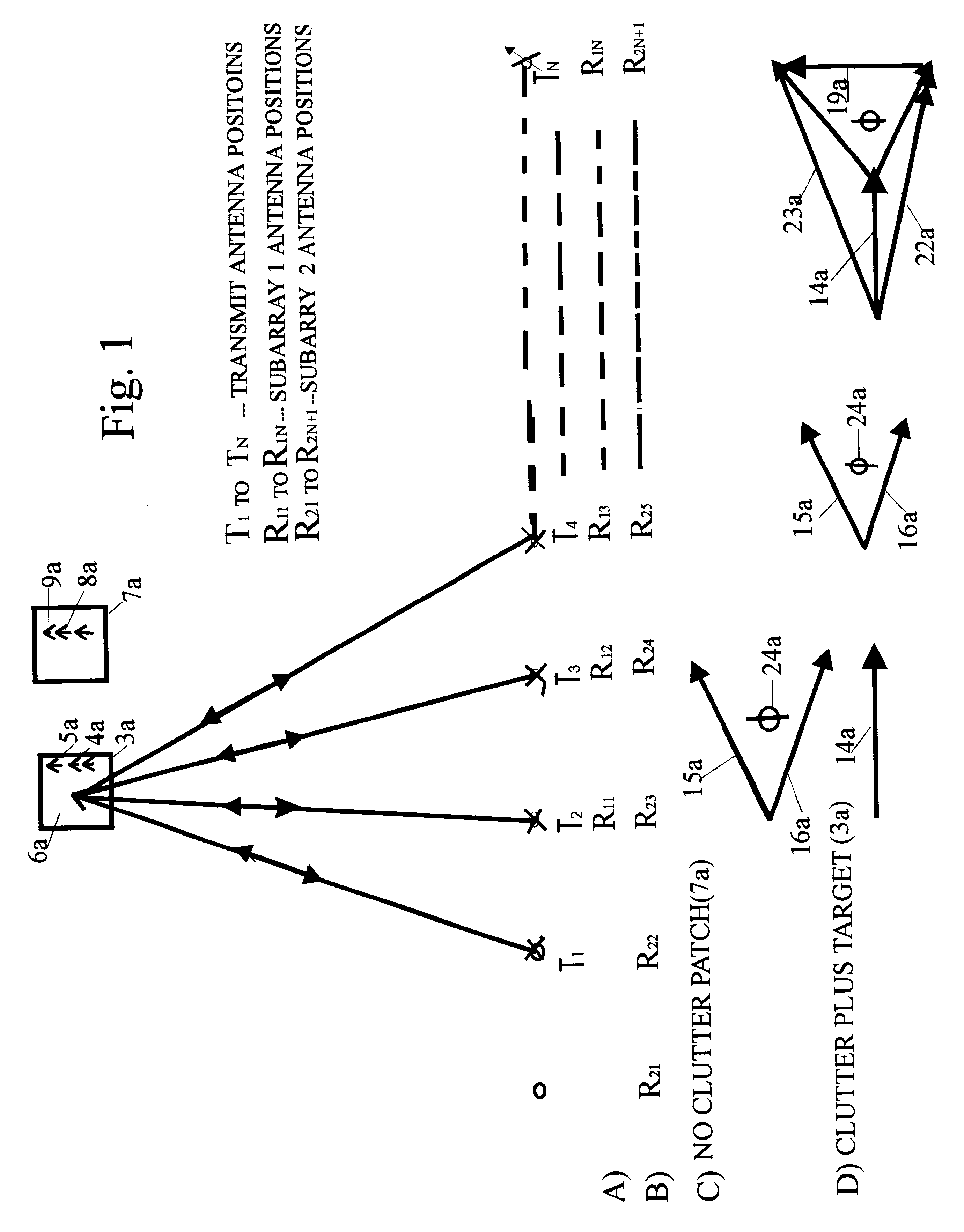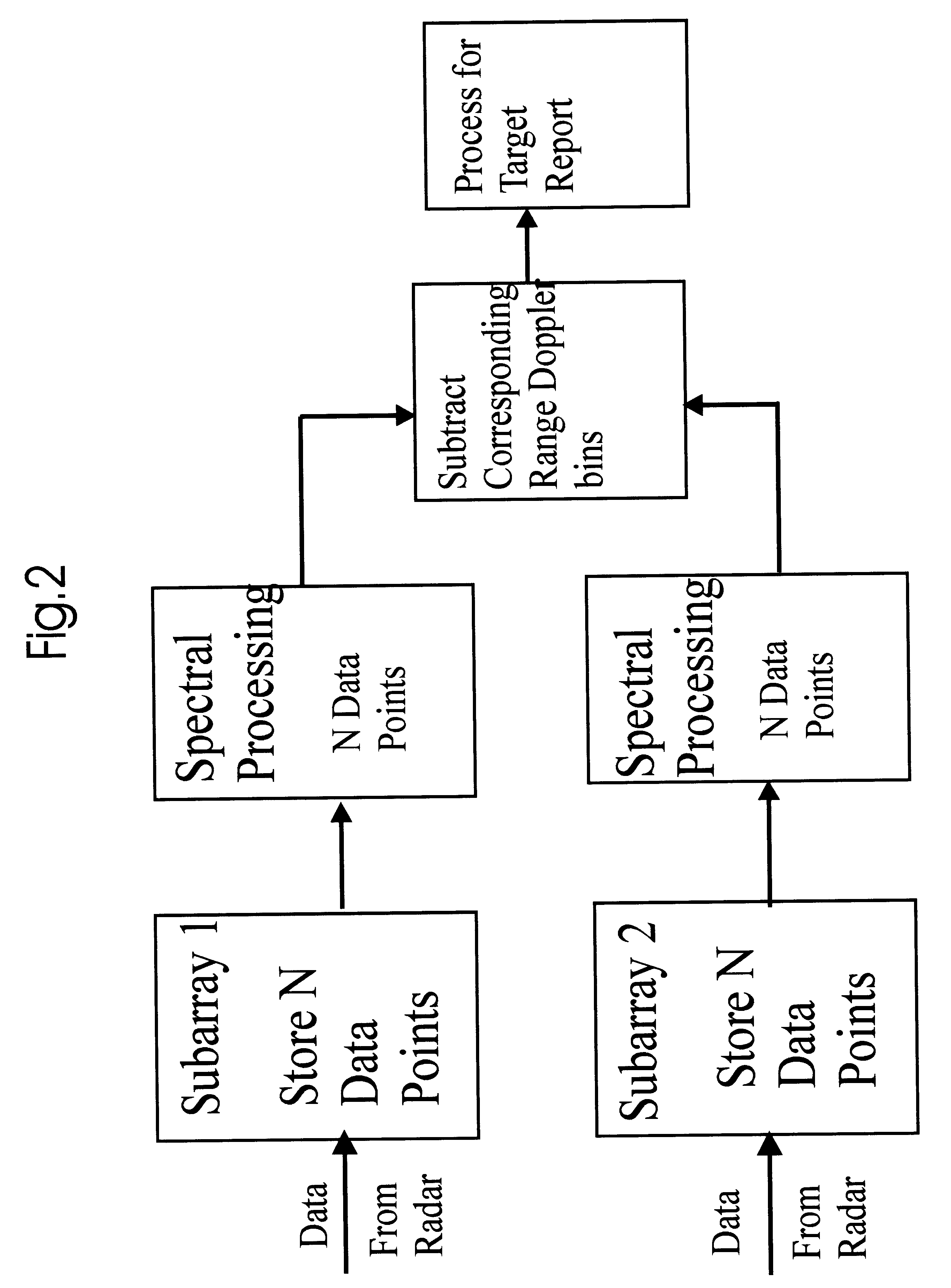Dual synthetic aperture radar system
a radar system and synthetic aperture technology, applied in the field of synthetic aperture radar systems, can solve the problems of limited accuracy, and achieve the effect of accurate range, cost-effectiveness, and relative radial velocity and angular position of targets
- Summary
- Abstract
- Description
- Claims
- Application Information
AI Technical Summary
Benefits of technology
Problems solved by technology
Method used
Image
Examples
examples
Parameters
Transmission frequency (XF1) of 1.sup.st aperture--1000 MHz-.lambda..sub.1 =0.1.sup.1
Transmission frequency (XF2) of 2.sup.nd aperture--1100 MHz-.lambda..sub.2 =0.909.sup.1
PRF of 1.sup.st aperture--1000 Hz
PRF of 2.sup.nd aperture--1000 Hz
64 Data Points
Same--all other conditions of Radar
Basic Computed Values
Resolution of filter or phase shift per filter 360.degree. / 64=5.625.degree.
Frequency resolution per filter=1000 Hz / 64=15.625 Hz
Ambiguous velocity at XF1-.lambda..sub.1 2.times.PRF=48 feet / second
Ambiguous velocity at XF2-.lambda..sub.2 / 2.times.PRF=43.2 feet / second
Velocity resolution per filter at XF1=48 / 64=0.75 feet / second
Velocity resolution per filter at XF2=43.2 / 64=0.675 feet / second
Unambiguous velocity=(48.times.43.2) / (48-43.2)=432 feet / sec=260 mile / hr
Q-DPCA=14.5.degree. only dependent on PRF=1000 Hz
P-DPCA=2.8.degree. only dependent on PRF=1000 Hz
As seen from the example how the values change. From these parameters and computed values the analogous processing is involv...
PUM
 Login to View More
Login to View More Abstract
Description
Claims
Application Information
 Login to View More
Login to View More - R&D
- Intellectual Property
- Life Sciences
- Materials
- Tech Scout
- Unparalleled Data Quality
- Higher Quality Content
- 60% Fewer Hallucinations
Browse by: Latest US Patents, China's latest patents, Technical Efficacy Thesaurus, Application Domain, Technology Topic, Popular Technical Reports.
© 2025 PatSnap. All rights reserved.Legal|Privacy policy|Modern Slavery Act Transparency Statement|Sitemap|About US| Contact US: help@patsnap.com



